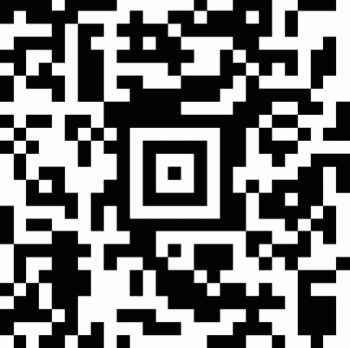 Mark Beauchamp, European marketing manager for Citizen Systems Europe, looks at how the latest generation of portable printers are smaller, lighter and more robust than ever before, while incorporating greater functionality, performance and a longer battery life
Mark Beauchamp, European marketing manager for Citizen Systems Europe, looks at how the latest generation of portable printers are smaller, lighter and more robust than ever before, while incorporating greater functionality, performance and a longer battery life
Mobile barcoding, mobile apps, mobile ticketing, mobile couponing… the list goes on. The mobile revolution, sparked by technology such as Apple’s iPhone and the advent of 2D barcodes, holds the potential to revolutionise the way in which barcodes are designed, produced and used.
In particular, 2D barcodes, or QR codes and DataMatrix, are able to hold many hundreds of characters of information providing a proven and cost effective method of stock and product control. The high levels of performance, functionality and the wealth of complex information that can be recorded and accessed throughout the supply chain by 2D barcodes makes them particularly suited to use in industries where product traceability is key, such as in the food and pharmaceutical sectors. Indeed, 2D barcodes act as sophisticated tracking tools, providing a portable information source on each labelled product.
Furthermore, 2D barcodes can help to eliminate the worrying issue of counterfeiting, allowing companies to realise significant cost savings. Additionally, this enhanced level of data management brings a number of other benefits, from brand integrity and superior consumer satisfaction to improved stock management.
Ultimately, however, in most applications a barcode has to be printed before it can be scanned. Although the science of printing has not leapt forward at the same rate of mobile scanning and data recognition, portable printer technology has nonetheless been quietly evolving.
Indeed, the latest generation of portable printers from leading manufacturers, such as Citizen Systems Europe, has been developed to provide compact and robust printing virtually anywhere for a wide range of receipts and labels, such as mobile tickets and delivery slips. The use of these printers is particularly useful in a warehouse environment, as it means staff can easily break bulk and pack or delivery print out labels wherever they are in the building, without needing to go to a central point to collect labels, bringing significant improvements in efficiency and productivity. The latest printers are also quick and simple to use, allowing staff to save time and cut the risk of errors when printing. For example, Citizen’s portable printers accept rapid change two inch and three inch diameter rolls, respectively, allowing long print runs without the need for frequent media changes.
 A clamshell design makes it easy to access the inside of the printer for media loading. Media changeover can be performed in seconds thanks to the drop in paper loading and paper indicators, with simple feed paths to eliminate the risk of tangling or jamming, while an integral tear bar cuts media to the required length. Most importantly, this can improve efficiency considerably and reduce the risk of human error, with staff then being free to focus on more important tasks.
A clamshell design makes it easy to access the inside of the printer for media loading. Media changeover can be performed in seconds thanks to the drop in paper loading and paper indicators, with simple feed paths to eliminate the risk of tangling or jamming, while an integral tear bar cuts media to the required length. Most importantly, this can improve efficiency considerably and reduce the risk of human error, with staff then being free to focus on more important tasks.
One of the keys to these latest developments in printing devices is constantly evolving lithium ion battery technology that allows the day long operation of these printers without the need to recharge or swap batteries. Functionality is increased still further through the use of integral wireless LAN or Bluetooth connections in the printers, providing the flexibility to reliably connect to many data sources or handheld devices, while also eliminating the health and safety problems of trailing cables posed by most conventional machines.
Perhaps most importantly, the latest printers enable businesses to maintain an excellent degree of traceability as they provide permanent output on various types and sizes of media, and have dedicated connectivity to centralised computer systems.
The dawn of the latest 2D barcodes is completely revolutionising the use of barcoding technology, allowing businesses to exploit the critical functions of traceability and tracking by providing a wealth of complex information throughout the entire supply chain, from manufacturing and distribution through to retail. Combined with the use of the latest generation of printing technology, businesses can realise all the benefits of the new barcodes simply and cost effectively, while improving efficiencies and productivity, which ultimately can have a positive impact on the bottom line.


